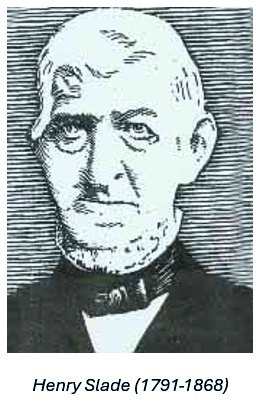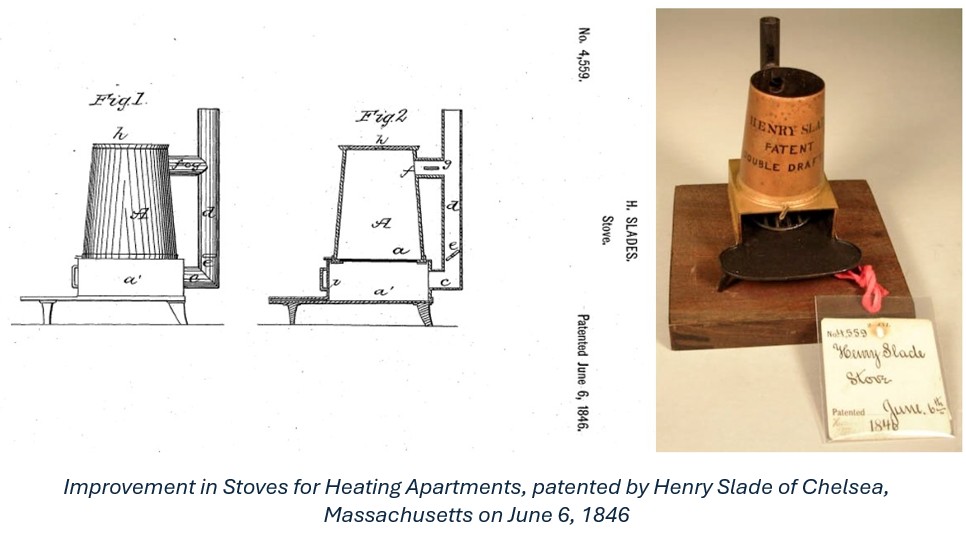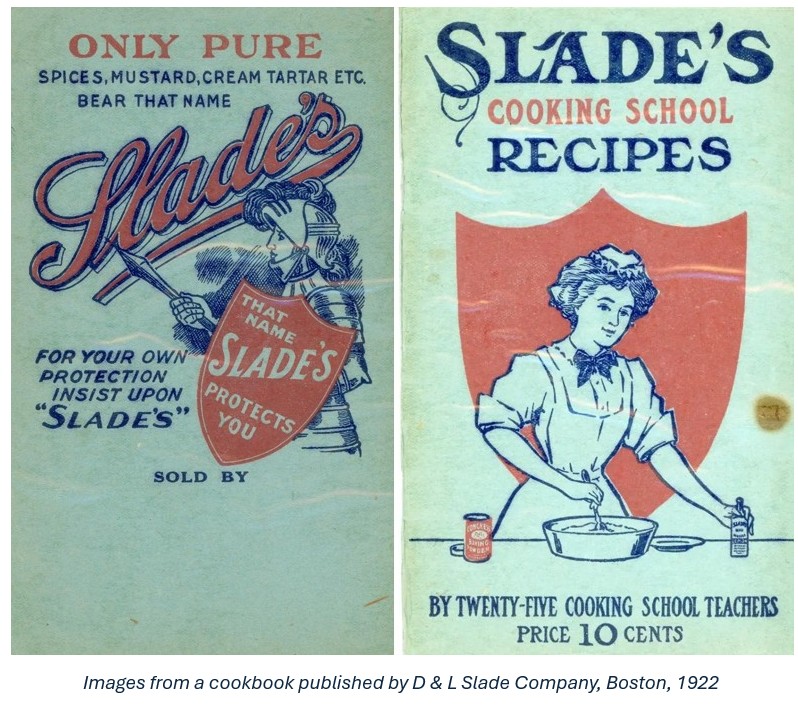Thanksgiving is all about family traditions. For generations, many cooks have insisted on using Bell’s poultry seasoning mix to prepare their Thanksgiving and other holiday meals. Hagley owns a patent model for a stove that, while it was never designed to cook a Thanksgiving dinner, had an inventor who played a supporting role in the manufacture of the iconic seasoning. 
In the late 1820s, Henry Slade (1791-1868) operated a mill for grinding corn and processing tobacco for snuff in Chelsea, Massachusetts. Unlike the gunpowder mills powered by the flow of the Brandywine Creek here at Hagley, Slade’s mill relied on the movement of the tides. Called “tide mills,” the pressure from the incoming tide automatically opened flood gates allowing water to flood the nearby marsh and mill pond. As the tide flowed out, the gates closed, trapping the water and making it available to power the machinery.
Much in the same way we look to computers to handle many tasks today, nineteenth century Americans constantly searched for ways to use machines to operate faster, cheaper, safer, and more conveniently. Likewise, Henry and his sons, David and Levi, recognized that their mill machinery could be used to process other commodities. They began grinding the barks, nuts, and seeds that provided the spices that make food taste so much better. Prior to the mechanization of this process, people would purchase the resources whole and grind them at home by hand. Legend has it that the brothers ground a test batch consisting of a half-barrel full of cinnamon and hand-carried it into Boston for sale.
Their customers must have liked the convenience of pre-ground spices because their business flourished. The Slades built, and later expanded, a wharf in town to import exotic ingredients and transport their bulk products for packaging in Boston. By the 1850s, their business, D & L Slade Company, was the largest manufacturer of spices in New England.
Around this time, Henry invented this heating stove in Hagley’s patent model collection. It is designed to allow air to flow both upward and downward through the fuel to increase combustion and heat more efficiently.

While the Slade’s spice business was taking off, a grocer named William G. Bell (1839-1915) moved from Lowell, Massachusetts to Boston to take advantage of the commodities being offloaded directly from ships at the wharves. In 1867, he developed his own seasoning blend and began selling it in the city. When he died, D & L Slade Company purchased the rights and manufactured and distributed it worldwide into the mid-twentieth century. Bell’s claims to be the oldest seasoning blend in the country.
Through the growing medium of print advertising, the Slade company boosted sales and market share. At a time when many consumers were suspicious of manufacturers using unhealthy additives and artificial ingredients, the company promoted the purity and quality of its products thereby earning brand loyalty. As homemakers began taking over many of the responsibilities that once were handled by domestic servants, the Slades also published cookbooks incorporating their products and cemented their place in family cooking traditions.

If you are looking for a way to entertain guests in town for the holiday, or to burn off some of those calories from that yummy Thanksgiving dinner, walk Hagley’s gorgeous property and enjoy a heaping helping of American industrial history. Be sure to visit this patent model near the entrance to Nation of Inventors, Hagley’s permanent exhibition celebrating American invention and innovation through over 100 patent models!
Chris Cascio is the Alan W. Rothschild Assistant Curator, Patent Models
